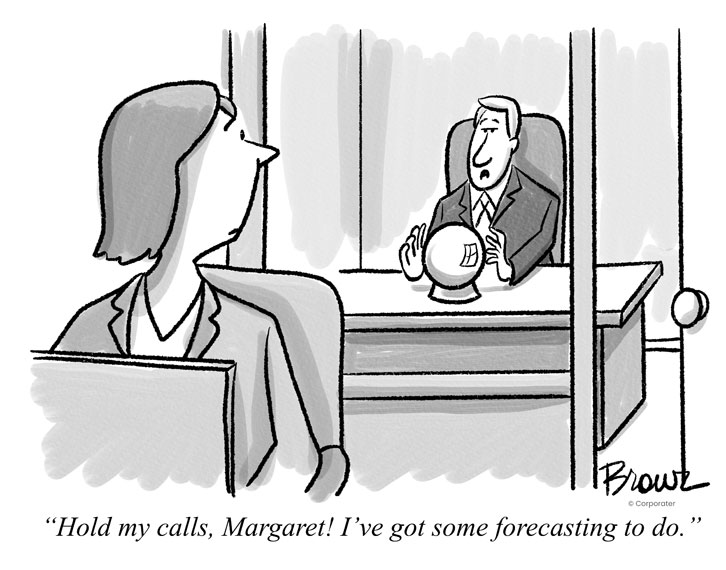
That we live in a world of constant and upending change has been accepted as a given in every corner of our modern society. While change is often disruptive and challenging for those of us caught in its midst, what has become more troublesome in recent days is the extreme volatility associated with the changes we’re witnessing — whether in climate, finance, or the business world.
Climate volatility, a touchstone in the ongoing debate over global warming, is well documented. Over the past several years, we’ve seen extreme weather conditions wreak havoc across the globe. Hurricanes, wildfires, extended drought conditions, and record high temperatures, just to name a few.
Given the rapid and extreme pace of change, you might logically conclude that it’s more important than ever to effectively plan for the future — assessing your environment, projecting present trends, and creating a strategy that sees you vanquishing your competition and controlling your markets. Of course, we are ardent believers in strategic planning, but the realities of our ever-changing environment have forced us to re-evaluate the role of medium to long-term strategic planning in organizational success. What first caused us to shift our thinking was the realization that we, as human beings, are pitiful predictors of the future. This sad reality can be viewed both empirically — one of many studies of expert predictions discovered that over 80 percent were wrong — or by simply examining popular cultural trends: JK Rowling’s original manuscript for Harry Potter was reportedly rejected by upward of a dozen publishing houses. This dramatic inability to predict the future presents a dilemma for strategic planners since, at its core, strategy is concerned with making predictions about the future, events that are unknowable.
So, rather than trying to predict the future with certainty, try these ideas to embrace, and even profit from, the volatility swirling about you.
- Examine your business – where is the most volatility occurring?
Cast a critical eye on the core components of your business, those that are potentially subject to the most volatility. The purpose of this exercise is to gain insights into what is happening “on the ground” around you. Here is a shortlist of the many possible volatile phenomena that may be spinning in your organizational orbit: customer preferences, employee competencies (in relation to strategy), cultural changes, global and local economy, technology, competitor actions (particularly those of new competitors), globalization, regulations, demographics, supplier relationships. - Make educated guesses
In the previous step, we suggested you engage in detailed observations about what is occurring right now. With that perspective, shift the focus out just a bit (maybe months instead of years) and hypothesize on what is likely to take place in the immediate future. What are your customers buying? What are your competitors doing today that is impacting you? Are you surprised in any way at what is playing out around you? Why or why not? Answering these questions allows you to confront the realities of your current situation and provides you with the ammunition necessary to make more strategic decisions moving forward. - Consider an “emergent strategy” approach
Perhaps a more suitable planning approach today is what the management scholar Henry Mintzberg described as “emergent strategy.” The essence of this school of thought suggests that planners focus less on making predictions about far off events over which they have little control, and concentrate instead on reacting quickly to changes on the ground around them, thereby improving their ability to learn about what is working at this moment. One corporate example of this movement is Zara, the Spanish clothing retailer. Zara eschews the traditional process of attempting to predict next year’s fashion trends, acknowledging that it basically has no idea what may be gracing the world’s runways, and later its streets, in the coming months. Instead, it employs an “observe, measure, and react” strategy. As a first step, Zara sends teams of people to shopping malls, cafés, and other gathering places to see what people are currently wearing so they can quickly develop numerous ideas about what might work. Based on those “on the ground” observations, the company produces a large portfolio of styles, fabrics, and colors, all in small batches, which are quickly dispatched to stores where sales can be accurately measured. Based on the information that comes back — the react component — Zara utilizes its flexible manufacturing and distribution capabilities to respond quickly, dropping items that aren’t selling and scaling up the production of those that are.
While we don’t have a crystal ball at our disposal, we can increase our chances of future success by taking into account what is happening around us today, and using that knowledge to help us make informed decisions about what may in fact take place tomorrow or years down the road.

